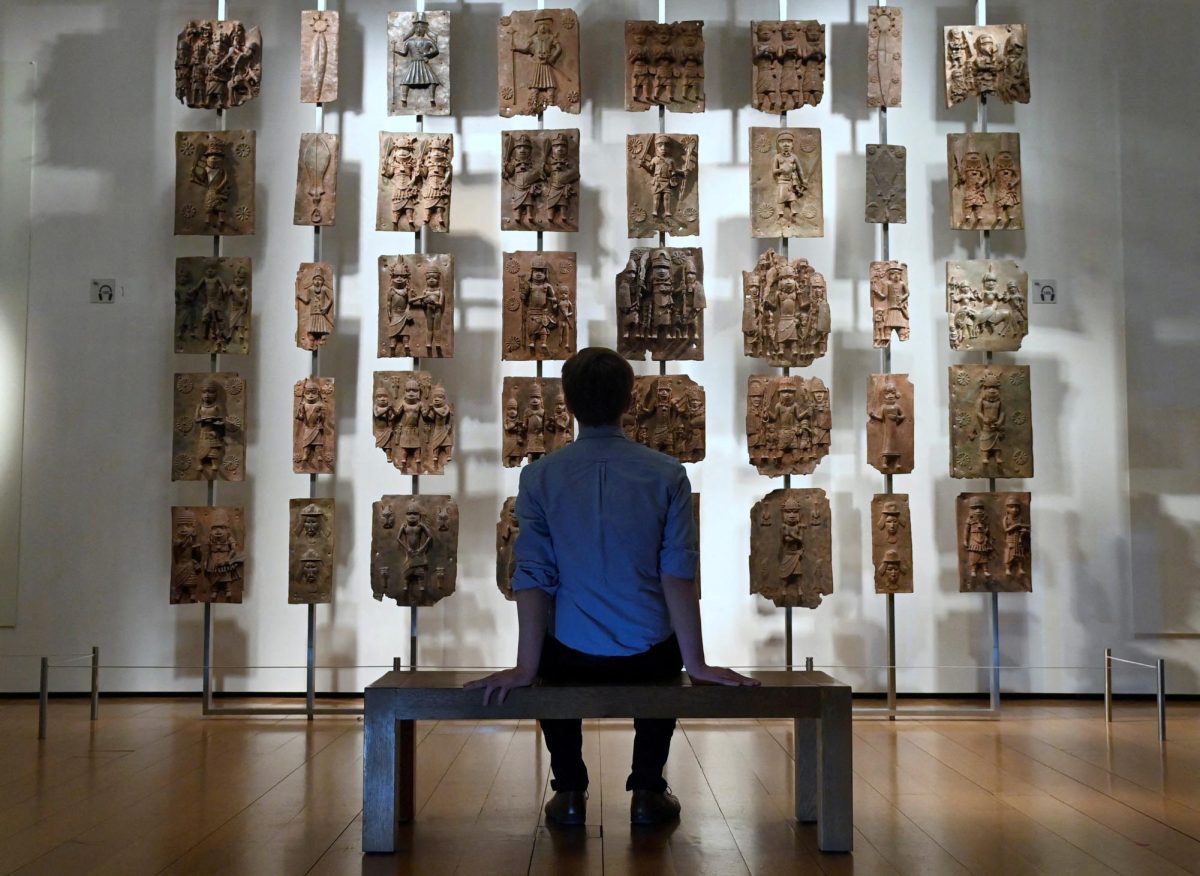Who truly owns culture — the nations where it exists or the global institutions that house and display its artifacts?
This question is deeply rooted in the history of Western colonialism, a period when European nations explored, conquered and exploited vast parts of the world, significantly altering the social and economic landscapes of developing countries. Beginning around 1500 and lasting until the mid-19th century, European powers not only reshaped the economies and social structures of many nations, but also appropriated elements of their cultures. European powers often stole cultural artifacts and displayed them in their own countries.
This leaves today’s modern art institutions with an ethical dilemma. In 2020, the United Nations Educational, Scientific and Cultural Organization estimated around 52,000 artifacts are missing from their countries and are displayed in major art museums —many of which were violently removed or looted from their countries of origin in Africa, Asia and the Americas during European colonial expansion.
Pieces of art powerful reflections of cultural identity and local history and therefore belong within their cultural context.
The Rosetta Stone, one of the most famous and only surviving translators of Egyptian hieroglyphics, was seized by British troops in the 1801 agreement from Napoleon Bonaparte’s military occupation of Egypt. Zahi Hawass, Egypt’s former minister for antiquities affairs, argued Egypt had no say in the 1801 agreement. The stone is now displayed in the British Museum in London and is one of the most popular exhibits since it was added in 1802.
The Rosetta Stone is one of many ancient Egyptian artifacts that have not been returned to Egypt. It is a significant piece of Egyptian linguistic history that allowed ancient Egyptian hieroglyphics to be translated to writing for the first time.
The Rosetta Stone was made by ancient Egyptians and was protected within Egyptian lands until French troops under Napoleon attempted to completely take over Egypt. Audiences should be reminded that local populations viewed the French as invaders and not saviors. Returning the stone back to Egypt would boost the country’s cultural engagement, as more visitors would be drawn to explore the origins of one of the world’s oldest and most influential cultures.
In a similar story of colonization, the Benin Bronzes, a group of plaques and sculptures, were looted by British troops in 1897 during the Punitive Expedition in Nigeria. They are currently displayed in several major art institutions, including the Boston Museum of Fine Arts, the Metropoliton Museum of Art and the British Museum in London. Originally taken from the kingdom of Benin (present-day Nigeria), the Nigerian government has requested retribution many times. Despite this, many of the Bronzes remain in Western museums, with only a few being returned in recent years. In 2021, the British Museum faced increased pressure to return the items, but, as of now, many remain in its collection.
Holding onto these artifacts is also a violation of international law. The 1970 UNESCO Convention mandated the return of stolen objects when rightful ownership can be established. Similarly, the 1995 UNIDROIT Convention on Stolen or Illegally Exported Cultural Objects demanded the return of cultural property that has been unlawfully excavated or exported.
The Aksum Obelisk, a 1,700-year-old monument from Ethiopia, was taken by Italian forces in 1937 during their invasion of Ethiopia. The obelisk was transported to Rome, where it was displayed for decades. The Italian government returned the obelisk to Ethiopia in 2005. It now stands in its original location in Aksum, symbolizing the return of an important piece of Ethiopian heritage.
Thanks to these laws, many stolen artifacts have been returned to their countries. However, numerous prestigious museums continue to hold on to pieces that attract significant media attention and crowds of visitors. Critics who argue against pieces being returned claim that without massive institutions, these objects would not be accessible to the public.
I find this argument flawed. As Western museums grow in size and influence, ethnic artifacts become more accessible to their audiences, reducing the incentive for people to visit the countries of origin and experience these cultures firsthand.
Returning cultural artifacts is not just about preserving history — it’s about justice. It recognizes the deep connection between these treasures and their homeland, acknowledging the painful history of colonialism.
The next time you visit a museum — whether it’s the MET or your local history museum — pause for a moment to reflect on the story behind each artifact. Remember, it’s not just a piece of art but a symbol of a much deeper and often complicated history. At that moment, you will understand that where something belongs is just as important as what it represents.






















